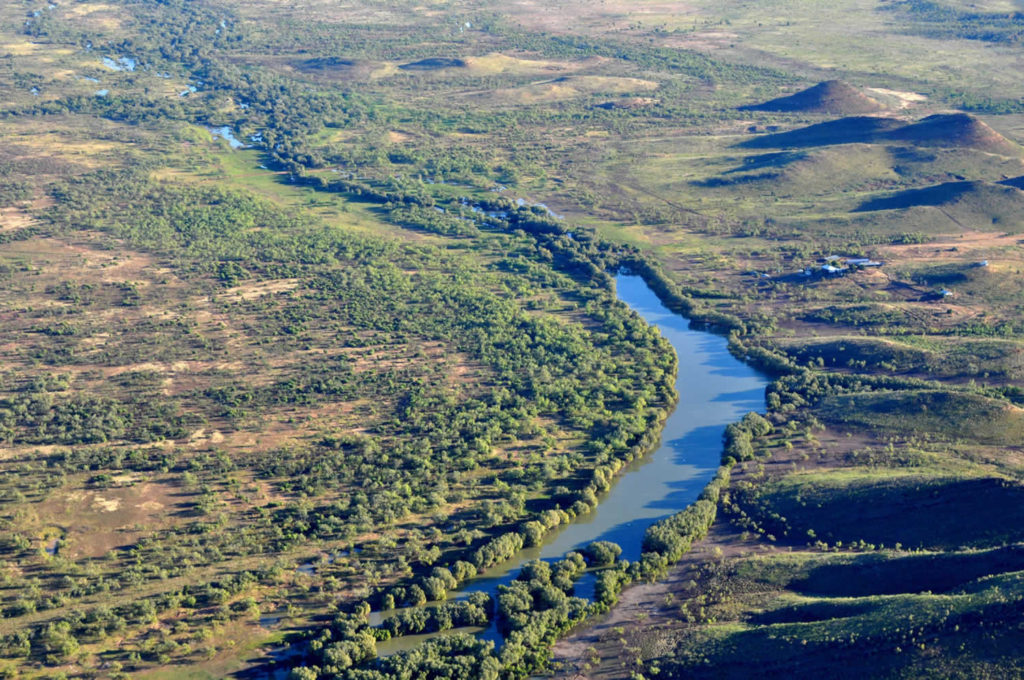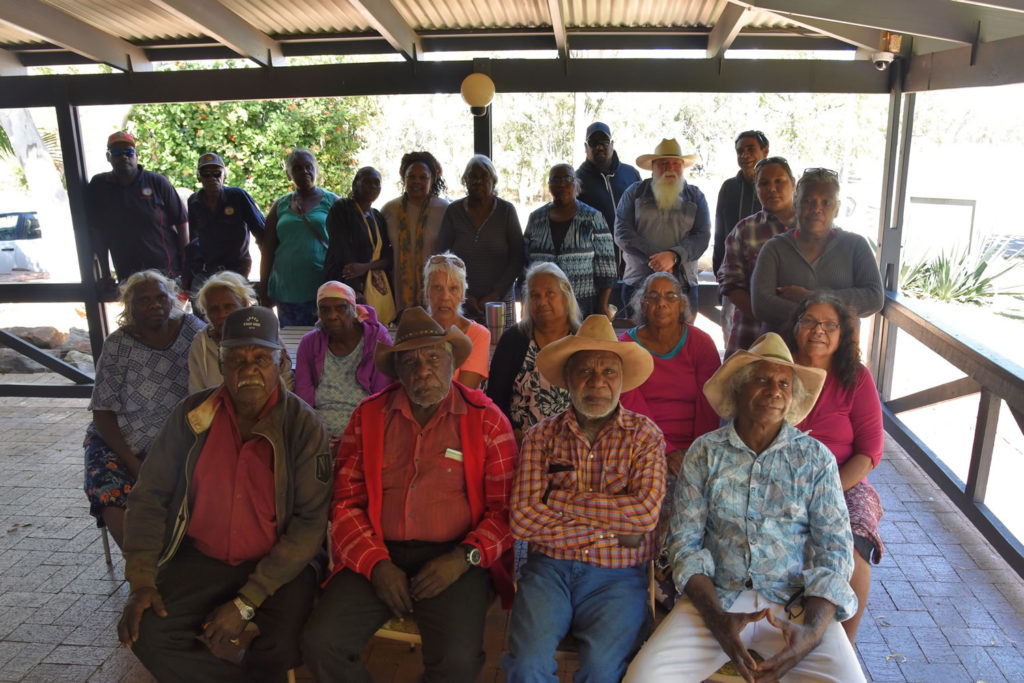By Dr Anne Poelina, Nulungu Research Institute: University of Notre Dame
Everyone who has an association with the river, whether Indigenous or not, talks about how important it is. It is the River of Life.[1]

The Mardoowarra (Martuwarra or Fitzroy River) is an iconic, heritage listed unregulated river system of global value and significance. For Australia’s original peoples of the Mardoowarra, the river was formed in the beginning of time by Nyikina ancestor, Woonyoomboo. Woonyoomboo is the human face of the Mardoowarra and in partnership with Yoongoorrookoo, the sacred ancestral spiritual living being created the river valley tracts.[2] Woonyoomboo was an explorer, map maker and scientist who named the places, animals, birds, fish, plants and living water systems. These environmental and cultural values are recognised in both the Western Australian Aboriginal and National Heritage Listings.
In 2016, Traditional Owners expressed a collective vision for the Mardoowarra in the Fitzroy River Declaration. In 2018 they established the Martuwarra Fitzroy River Council (MFRC) as a ‘cultural governance model to maintain the spiritual, cultural and environmental health of the catchment’.[3] As a result, the MFRC considers the river to be communal property that belongs to all of us. It should be promoted and protected for the benefit of present and future generations.
Today the management of the Fitzroy River catchment is at a crossroads, with diverse and conflicting visions for its future. Despite the landmark High Court’s 1992 Mabo (No 2) decision, Australian law does not allow Traditional Owners of the Mardoowarra the right to veto invasive destruction of our ancestral lands and Living Waters.
There is increasing pressure to ‘develop’ the Martuwarra’s water, evidenced by the Commonwealth government’s agenda for northern development. This concerns Traditional Owners. The commodification of water, which prices water as a ‘resource’ in Australia’s south has resulted in river catchment scale environmental damage. Gross mismanagement of the Murray Darling is evident, despite the government’s reported attempts to repress criticism from a UN report. In the Kimberley, we are already seeing warning signs, such as the tragic death of sawfish at Uralla Creek, one of the few tributaries where the Mardoowarra’s water is taken for irrigation.
The Indigenous wisdom and leadership that has emerged in response to the Murray-Darling Basin catastrophe provides ‘critical lessons’ which we can learn from. Traditional Owners note current damage and ongoing threats to the Fitzroy, and the widespread destruction in the Murray-Darling Basin. Over the years, we have strongly and consistently advocated for better land and river management as well as addressing cumulative threats at a catchment scale. By establishing the MFRC, Traditional Owners are leading the way to integrated land and water catchment management that fulfills our obligations to look after the Mardoowarra.
In a time of growing uncertainty of food, water and energy security we need to protect our rivers as the life blood and life force of our Country!
The Fitzroy River declaration is available here: https://www.klc.org.au/kimberley-traditional-owners-establish-martuwarra-fitzroy-river-council
The Fitzroy River Science Statement is available here: http://www.fitzroystatement.org/statement

[1] A Poelina, ‘Protecting the river of life’ in K Aigner (ed), Australia: the Vatican Museum’s Indigenous collection (Aboriginal Studies Press 2017), 217.
[2] C Hattersley (ed), Nyikina Stories: Woonyooboo and Jandamarra (Madjulla, Inc. 2009)
[3] Poelina, Taylor and Perdrisat, 2019 ‘Martuwarra Fitzroy River Council: an Indigenous cultural approach to collaborative water governance’, Australasian Journal of Environmental Management .
[1] A Poelina, ‘Protecting the river of life’ in K Aigner (ed), Australia: the Vatican Museum’s Indigenous collection (Aboriginal Studies Press 2017), 217.
[1] C Hattersley (ed), Nyikina Stories: Woonyooboo and Jandamarra (Madjulla, Inc. 2009) [1] Poelina, Taylor and Perdrisat,2019 ‘Martuwarra Fitzroy River Council: an Indigenous cultural approach to collaborative water governance’, Australasian Journal of Environmental Management .